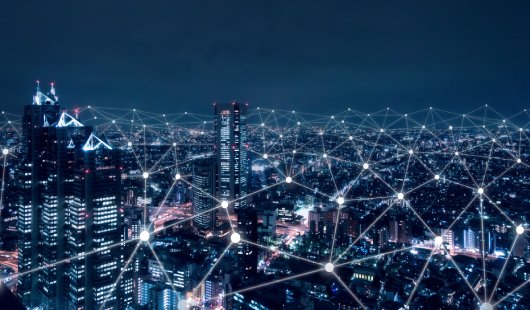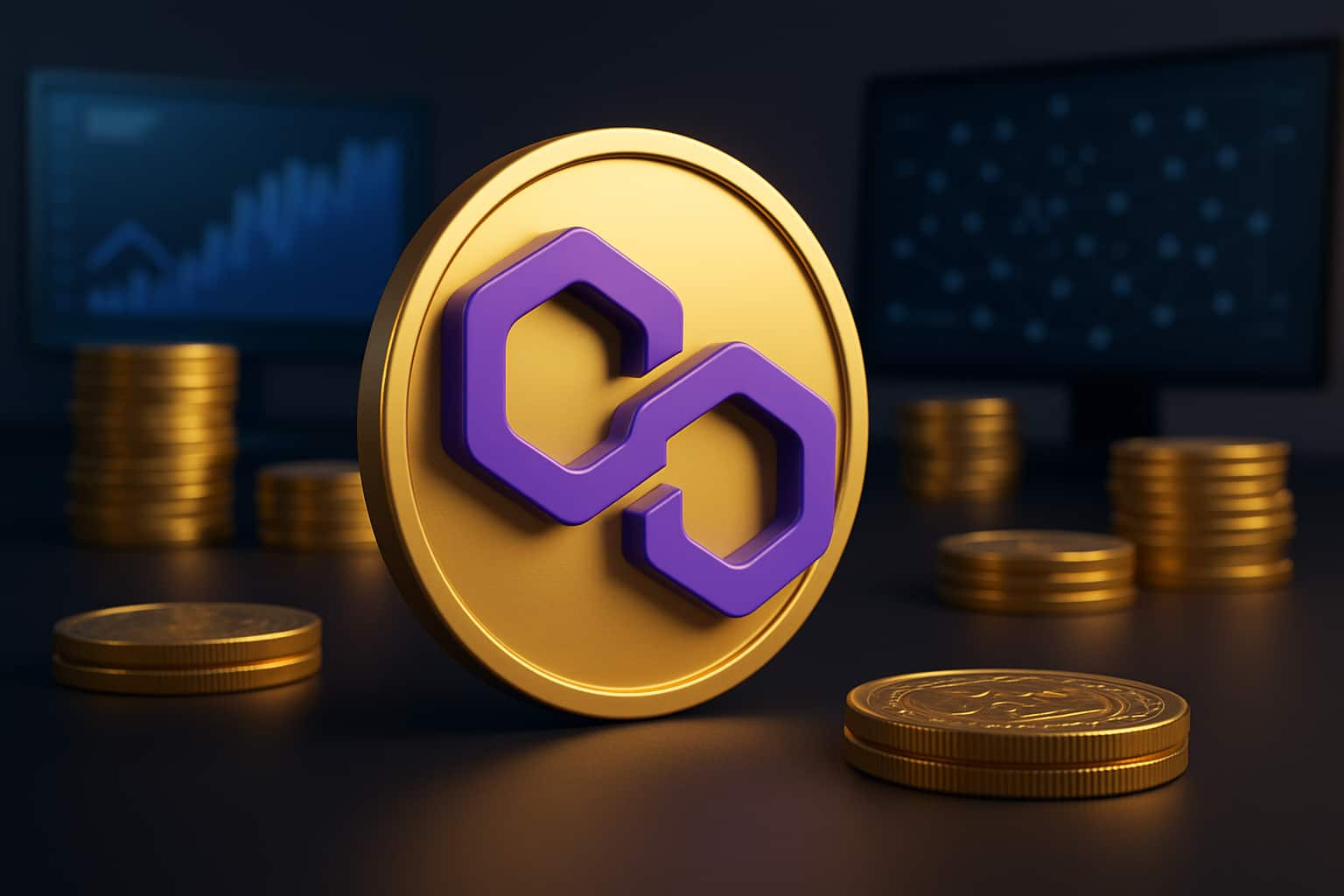-
Powerful technologies like Blockchain and the Internet of Things (IoT) are super reliable to each other and are changing our lives rapidly. Using Blockchain solutions with IoT can reimagine urban landscapes as intelligent, sustainable ecosystems. This technological synergy empowers us to gather crucial data on traffic patterns, energy usage, and air quality, leading to smarter and more efficient cities. In this blog post, we explore the advancements for smart cities by converging Blockchain and IoT.
With growing innovation in the decentralized space, tools like Flashbots and its services are optimizing blockchain transaction transparency and performance—essential for high-frequency IoT networks in smart cities.
Also, Check | Blockchain Solutions for Next-Gen ERP Systems
Blockchain and IoT: A Powerful Synergy
Blockchain and IoT are two revolutionary technologies that have the potential to reshape our world. IoT provides a physical device network that exchanges data, while Blockchain offers a secure, decentralized ledger to store this data. Integrating these technologies can address many challenges smart cities face, such as data security, transparency, and interoperability.
As security becomes paramount, understanding smart contract development can further enhance the secure, automated processing of IoT data across devices and platforms.
Explore | Creating a Nexus of Blockchain, AI, and IoT for Business
Real-World Applications of Blockchain and IoT in Smart Cities (Examples)
The integration of blockchain and IoT (Internet of Things) is transforming various industries by providing enhanced security, transparency, and efficiency. Below are detailed examples and applications across different sectors:
Supply Chain Management
Overview
Combining blockchain and IoT in supply chain management provides real-time tracking and secure data sharing, enhancing transparency and efficiency across the entire supply chain.
For efficient implementation, backend reliability plays a key role. Learn how using design patterns in Node.js can ensure scalable and maintainable architecture for such solutions.
Application
Tracking and Traceability:
IoT devices with sensors can monitor the location, condition, and movement of goods in real-time. This data is securely recorded on a blockchain, creating an immutable ledger accessible to all stakeholders.
Example: Walmart and IBM's blockchain initiative for tracking the provenance of food products, from farm to store shelf, ensuring food safety and quick response to contamination issues.
Fraud Prevention and Quality Control:
Blockchain ensures data integrity, reducing the risk of tampering or counterfeiting. This is crucial for quality control and efficient product recalls.
Example: Everledger uses blockchain to verify the authenticity and ethical sourcing of diamonds.
Benefits
- Enhanced traceability and visibility
- Reduction of fraud and counterfeit products
- Efficient recall processes
Smart Homes and Buildings
Overview
Blockchain and IoT enhance security, privacy, and automation in smart homes and buildings by providing tamper-proof records of interactions and environmental data.
Applications
Security and Access Control: IoT devices like smart locks and cameras generate data on access and occupancy, which is stored on a blockchain for secure auditing and monitoring.
Blockchain platforms also empower industry-specific solutions. Explore how Stellar connects wallet services to anchors to provide secure financial integration for smart residential setups.
Example: Telstra's integration of blockchain with biometric security to offer enhanced smart home solutions, allowing residents greater control over access and privacy.
Energy Management: IoT sensors monitor energy usage, and blockchain ensures secure and transparent recording of this data, optimizing energy consumption.
Example: Power Ledger's platform for peer-to-peer energy trading uses blockchain to track energy usage and transactions among neighbors.
Benefits
- Improved security and privacy
- Transparent energy usage and management
- Greater control over home automation
Smart Cities
Overview
The combination of blockchain and IoT helps smart cities by optimizing urban resource management, improving sustainability, and enhancing infrastructure planning.
Applications
Traffic Management: IoT sensors collect data on traffic patterns, and blockchain ensures secure, real-time access for better traffic flow management.
Urban mobility also benefits from strong platform choices. See a comparison of Solana vs BSC to decide which blockchain is better suited for decentralized smart city applications.
Example: Barcelona's smart traffic management system integrates IoT and blockchain to reduce congestion and emissions.
Environmental Monitoring: IoT devices track air quality and energy usage, and blockchain records this data to facilitate data-driven decision-making for urban planning.
Example: Dubai's smart city initiative utilizes blockchain to manage IoT data for optimizing city services and infrastructure.
Benefits
- Efficient traffic and resource management
- Enhanced environmental sustainability
- Improved urban living conditions
Healthcare
Overview
Blockchain and IoT revolutionize healthcare by providing secure, real-time data for patient monitoring, improving data management, and enhancing patient privacy.
Integrating IoT and blockchain also involves linking secure APIs and endpoints. This blockchain URL implementation guide helps create tamper-resistant IoT access points for healthcare applications.
Applications
Patient Monitoring: Wearable IoT devices track health metrics and upload data to a blockchain for secure access by healthcare providers.
Example: Mediledger uses blockchain to secure data from IoT devices, ensuring accurate medical records and better treatment management.
Pharmaceuticals Tracking: Blockchain and IoT ensure the authenticity and traceability of drugs throughout the supply chain, combating counterfeit drugs.
Example: Chronicled's MediLedger project uses blockchain to verify and track pharmaceutical supply chains.
Benefits
- Improved patient care and data accuracy
- Secure and interoperable medical records
- Reduced counterfeit drugs
Agriculture
Overview
In agriculture, blockchain and IoT optimize farming practices, enhance traceability, and improve sustainability by providing reliable data on crop and livestock management.
Blockchain is also redefining operations in other sectors. Read how it is empowering fleet management with enhanced logistics and real-time data sharing.
Applications
Precision Farming: IoT sensors monitor soil conditions, crop health, and weather patterns, and blockchain records this data for efficient resource allocation and compliance.
Example: Louis Dreyfus Company used blockchain to track a soybean shipment from America to China, improving transparency in the supply chain.
Livestock Management: IoT devices track animal welfare and movement, with blockchain providing a transparent record for better management and compliance.
Example: TE-FOOD's blockchain solution tracks the journey of livestock from farm to table, enhancing food safety and transparency.
Benefits
- Optimized farming practices
- Transparent supply chain management
- Enhanced compliance with quality standards
While developing these decentralized applications, frontend tech matters too. Get insights on the difference between Angular, React, and Vue to choose the best framework for IoT dashboards or blockchain data visualization.
Also, Check Out | Accelerating IoT (Internet of Things) Adoption with Blockchain
The Future of Smart Cities with Blockchain and IoT
The integration of Blockchain and IoT holds immense potential for the future of smart cities. It can improve public services, enhance security, and better decision-making. However, data privacy, interoperability, and scalability must be addressed for widespread adoption.
Read Also | Application of Blockchain and Internet of Things (IoT) in Healthcare
Conclusion
In conclusion, the convergence of Blockchain and IoT is not just a trend, but a necessity for the evolution of smart cities. As we continue to explore this technological synergy, we can look forward to more intelligent, sustainable, and efficient urban ecosystems. The real-world examples mentioned above are just the tip of the iceberg, and the possibilities are endless. The future of smart cities is here, and it is powered by Blockchain and IoT. If you have a similar project in mind that you want to bring into reality, connect with our blockchain developers to get started.

Our Offices
INDIA
Emaar Digital Greens, Sector 61,
Gurugram, Haryana
122011.
Welldone Tech Park,
Sector 48, Sohna road,
Gurugram, Haryana
122018.















